|
GUILT EDGED MYSTERIES: DUTTON, An
Annotated Bibliography
by Steve Lewis, Victor Berch & Bill Pronzini In 1947, when E.P. Dutton decided to use a specialized imprint for their line of detective novels, what they came up with was a series of books which were designated “Guilt Edged” mysteries. The logo, an example of which you will see somewhat to the right and below, consisted of a gentleman in hat with squared-off upraised arms (as if designating a touchdown). This insignia was often seen on the front cover of the dust jacket, but sometimes not. In such cases the logo would be seen on the spine. (See Run, Killer, Run, by William Campbell Gault, as a prime example of such an occurrence.)  The line of Guilt Edged books continued through 1956, producing a number of books well worth collecting, if one could afford to do so. The dedicated collector with a small bank account will get stymied, we believe, by trying to obtain a full run of First Editions in Dust Jacket for one of the authors below. We will leave to you to decide to which author we are referring. Taken as an entirety, the books themselves tend strongly to be of the tough, hard-boiled variety, beginning (alphabetically) with Earle Baskinsy’s single novel for Dutton, and ending with the four books by Lionel White which appeared under the Guilt Edged imprint. As a matter of fact, and it is certainly worth pointing out, only a small handful of the books in this checklist were written by female authors, one of whom was not Beverley Nichols. This somewhat unexpected imbalance must have occurred as a deliberate plan of action on the part of the editorial staff at Dutton. It could not have been purely coincidental. Researchers in pursuit of a doctoral dissertation should take note. The data below is presented as a checklist, alphabetical by author, as previously mentioned, not chronologically. Books by a single author are listed by date. If an author had more than one book appear in one year, the order of publication is as given. Several books (and their authors) are relatively obscure. Most of this list has been compiled without actually having the books in hand. Any information that you can add would be appreciated. After the first posting Tapani Bagge, who has translated the book into Finnish, very kindly pointed out that Fred Brown’s The Far Cry was missing in action. He was right, and we’ve fixed it. Thanks also to Jeff Falco for catching several serious typographical errors and tracking down one of the titles that had eluded us earlier. (He also suggests that the gent in the logo is, more appropriately, being held up or arrested. He very well may be correct on this.) Al Hubin, as usual, provided his able assistance in matters bibliographical. One last thing. In all likelihood, as more research is done, the information on this page will change accordingly. There will be revisions, additions, and as much as we hate to admit it, corrections. As you use this checklist for your own purposes, please keep that in mind, and always come back to this page for the latest updated version, in terms of what we know then. Added most recently, for example, is a chronological listing of all of the books in the series, using the actual dates of publication. For a page of more cover images, go here. Also: February 13, 2006. Expanded notes for both Earle Basinsky and Edgar Box. September 23, 2008. Revised entry for the series characters in the George Griswold novels. 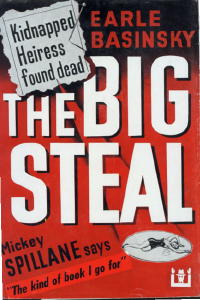 Earle Basinsky The Big Steal
1955
Basinsky was an air force buddy of Mickey Spillane, who after the war, encouraged him to go into writing. Spillane also helped to promote him highly. As you can see from the dust jacket of The Big Steal, Mickey’s name may have been even more noticeable than Baskinsky’s. The latter’s second and final book, Death Is a Cold, Keen Edge, was published in 1956 as a paperback original from Signet. He died soon thereafter, only in his mid-30s. In The Big Steal a police detective accused of stealing ransom money is forced to deal out justice on his own. A scan of the first page of the typed manuscript can be find here. Other than the two novels, Basinsky had three published short stories, one each in Manhunt, Mike Shayne Mystery Magazine, and The Saint Detective Magazine. The stories are the subject of a special edition of Peter Enfantino’s regular column for M*F on the crime fiction digest magazines of the 1950s.  Edgar Box
It was not widely known until some time after their publication that these three books were written by Gore Vidal. The series character in each is Peter Carter Sargeant II, a public relations consultant in New York City. Vidal wrote these books, it is said, when he was being blacklisted for writing The City and the Pillar, a book controversial for its acceptance of homosexuality. These books are Vidal’s only works of crime or detective fiction, with one exception, also published under a pen name. That book was a Gold Medal paperback original, Thieves Fall Out, as by Cameron Kay (1953). Once the fact was made known, it became an instant collector’s item. Paula Bramlette & Margaret Yates Death Casts a Vote 1948 This pair of authors wrote one earlier Dutton mystery, The Widow’s Walk, in 1945. Since both books take place in the US, an identification of the two women as Australian, as one publication states, seems to be in error. Other reliable sources indicate that Paula Bramlette was a native Texan (1917-1992), while according to an item discovered by Jeff Falco in the New York Times, Margaret (Polk) Yates (1915-1984?) came out as a debutante in 1933. She is not, however, the Margaret Tayler Yates who wrote four detective novels for Macmillan between 1937 and 1942. A Manhattan-based connection between the two women is suggested by the fact that in 1943 Paula Bramlette graduated from the Columbia School of Journalism, where she later established a scholarship in honor of her parents. While the book itself is set in New York City, the mystery is about a murder which is threatening to derail a Texas oil tycoon’s campaign for the Presidency. Trying to crack the case is Police Captain O’Sullivan. (Thanks again to Jeff for supplying the details.)  Fredric Brown
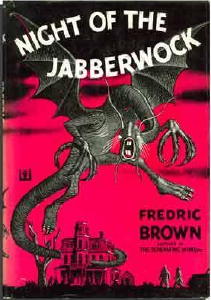 Fredric Brown is one of the few authors who are as well known, and as collectible, in both the mystery and science fiction field. Most of his books of SF are collections of short stories, some of them very short indeed – and often remembered for that very same fact. Brown’s first work appeared in the pulp magazines, beginning in the late 1930s and continuing through the war years. Some of the books above were based on shorter versions that appeared in the pulps. His first novel did not come until 1947, The Fabulous Clipjoint, the first of six books in which the unique nephew/uncle private eye team of Ed and Am Hunter appeared. (The sixth, The Late Lamented, was published by Dutton in 1959, but by that time the Guilt Edged designation had already been retired.) Based in Chicago, the pair of sleuths made up the Hunter & Hunter Detective Agency. Ed was the nephew, young and brash, while his uncle Am was the experienced one, an ex-carnival worker who kept Ed’s head on straight while he was otherwise losing it to every good-looking woman who came along in book after book. Glyn Carr
Of the eighteen mystery novels written by Glyn Carr that featured mountain-climbing detective and government agent Abercrombie Lewker, only seven have been published in the US, and only five of these appeared contemporaneously with the British editions. Three of Lewker’s adventures were published under Carr’s real name, Showell Styles. Settings for the Lewker books include all of the obvious ones, and some that aren’t: Norway, Austria, Switzerland, Nepal, Majorca, France and Wales. Surprisingly enough, “Filthy,” as he is called by his friends, is described as short, bald and fat. Perhaps there is hope for all of us. Born in 1908 and now in his 90s, Styles-Carr makes his home in his native Wales. (Thanks to Rue Morgue Press for being the source of some of the information above.) 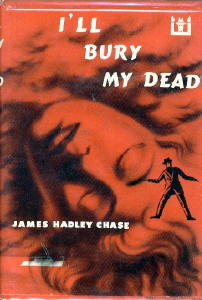 James Hadley Chase
James Hadley Chase, whose real name was René Brabazon Raymond, wrote nearly 90 detective thrillers under several names, beginning with No Orchids for Miss Blandish in 1939. Even though he was British, most of his books took place in the US, in an ersatz Chandler-Hammett vein, although they were reasonably entertaining in their own right. The two that came out from Dutton were in the middle of his career. Most of Chase’s novels were standalones, but insurance investigator Steve Harmas was one of several characters that managed to appear more than once. Murdo Coombs A Moment of Need 1947 This is the only book for which prolific mystery writer Frederick C. Davis used Coombs as a pseudonym. Not only did Davis write 40 or so hardcover novels under his name and others, but he also wrote a multitude of short fiction for the pulp magazines. A Moment of Need is an expanded version of the pulp novelette, “Thirteen Shrouds,” which appeared in the October 1946 issue of Dime Detective under Davis’s real name – an entry in the private eye Thackeray Hackett “Headliner Files” series Davis wrote for that magazine in the 40s. The plot of the novel involves Hackett’s search for a famous stage star and a gruesome crime that was probably pretty shocking to mystery novel readers in 1947.  A. B. Cunningham
Albert Benjamin Cunningham was an English professor whose bent for mystery resulted in a long series of detective novels featuring Sheriff Jess Roden of rural Deer Lick, Kentucky. His deductions, it is said, were based on common sense and sharp observation. Beginning with Murder at Deer Link in 1939, all of his books were published by Dutton. Only the ones above were Guilt Edged mysteries. (See also the entry below.)  Estil Dale The Last Survivor 1952 In taking a break from his Jess Roden series, or making an attempt to go in a new direction, A. B. Cunningham (above) used this pseudonym for this one last mystery novel only. Robert George Dean
The private eye who solves the cases involved in both of these novels is Tony Hunter, who worked for the Schmidt Agency in New York City. At least moderately hard-boiled, Hunter appeared in ten novels in all. There were seven in the five year period 1938-1942, then these two from Dutton, followed by one last one for Doubleday’s Crime Club in 1953. From the author’s obituary in the Washington Post, we have learned that Robert George Dean, who died in 1989, was a Wall Street broker before beginning his writing career and a Red Cross official during the 1940s. His other works of crime fiction include four novels in 1936-37 featuring the little-known Pat Thompson, one standalone in 1939, and three novels as by George Griswold. (See the entry below.) Lois Eby and John C. Fleming
Eby and Fleming were Hoosier cousins who, in the 40s at least, collaborated long distance. (She lived in California and he in Indiana until also moving west to continue the partnership.) They wrote five mysteries together, including a pair in 1946, also from Dutton. Also to their collaborative credit are several other novels, numerous radio plays, B movie scripts, and a handful of stories for such magazines as Street & Smith's Detective Story and Mike Shayne Mystery Magazine. The mystery thriller The Velvet Fleece was made into a film called LARCENY in 1948, starring John Payne and Joan Caulfield. It also is one of the novels covered by Bill Pronzini in Son of Gun in Cheek. William Campbell Gault
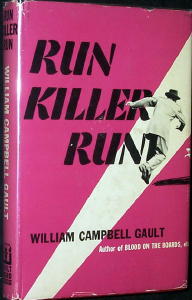 Bill Gault began writing for the pulps in 1937, specializing in sports and mystery/detective stories, before branching out to such slick magazines as The Saturday Evening Post in the 1950s. He also switched to novels in 1952, and his first six books in hardcover were done by Dutton as a major factor in their Guilt Edged line. Mixed in with the six was Shakedown (Ace, 1953), a paperback original published as by Roney Scott. Gault is probably known best for his stories of private eyes Brock Callahan and Joe Puma, the latter first showing up in Shakedown. Callahan, an ex-football player, made his initial appearance in Ring Around Rosa. (Later on, in a remarkable tour-de-force, Gault audaciously killed off Puma in The Cana Diversion (Raven House, 1980) and had Callahan solve the crime!) All of Gault’s books take place in the Los Angeles-Southern California area, a fertile ground for hard-boiled fiction. His earliest novels, from 1963 and earlier, are especially highly regarded by fans of the field. Don’t Cry for Me won an Edgar for Best First Mystery Novel in 1953, and in 1984 the author himself was awarded THE EYE Life Achievement Award from the Private Eye Writers of America. His career spanned six full decades. 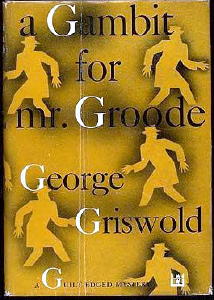 George
Griswold George
Griswold
As detective novels began a phase-down in the 1950s, Robert George Dean (entry above) switched over to a series of four spy and espionage novels under the name of George Griswold. The fourth novel, The Pinned Man, appeared from Little, Brown in 1954. Appearing or mentioned in all four books is Mr. Groode, although he is seldom a leading player. He is completely offstage and never actually appears in A Checkmate by the Colonel. He takes a more active role in The Pinned Man, which is told from the viewpoint of the main character, William Pepper, whom Groode assists throughout the book. In Red Pawns, he shows up only toward the end. Working largely as a mysterious figure in the background, he is a master of disguise and in fact, Groode is not his real name. As additional series characters, Jim Furlong appears in the first two books and Pepper in the last two. (Thanks to Peggy Bowen and Jamie Sturgeon for providing the information that helped to create a complete rewrite of this entry!) William Fryer Harvey The Arm of Mrs. Egan and Other Strange Stories 1952 Also known as W. F. Harvey, the author of this collection of weird, supernatural tales was born in 1885 and was inspired to become a writer by absorbing the works of Edgar Allan Poe at an early age. His lungs were damaged during World War I, and he died early at the age of only 52. Harvey’s work largely remained unnoticed until the movie THE BEAST WITH FIVE FINGERS, based on one of his short stories, was released in 1946. The Arm of Mrs. Egan was published first in England by J. M. Dent & Sons in 1951. Of the sixteen stories included, a character named Nurse Wilkie appeared in ten of them. Paul A. Holmes Murder Buttoned Up 1948 Murder Buttoned Up, an intriguing title, is the only mystery written by this author (1901-1985). Little else would be known about him, except that he became the subject of the second half of his daughter Janet Holmes’ book of poetry, The Green Tuxedo (Univ. of Notre Dame Press, 1998). In this sequence of poems, narrative and newspaper clippings, the author creates a portrait of her father, who was also a successful journalist, based on childhood memories and entries in a diary found after his death. (Thanks to Jim Kay Books of Sacramento CA for the digital camera cover shot of the jacket.) Clifford Knight
Born in 1886, Clifford Knight’s mystery-writing career began in 1937 with the publication of The Affair of the Scarlet Crab, the first of eighteen such “affairs” solved by his only series character, Huntoon Rogers, an English professor who turned on occasion into an amateur detective. These novels were published through 1947, first by Dodd, Mead and then by McKay. The final six novels, all from Dutton, did not feature Rogers, but were stand-alone thrillers only. Hugh McCutcheon
His career extending from 1951 to 1981, McCutcheon was the English author of 21 works of crime fiction, and as Hugh Davie-Martin, four more. Most of them were never published in the US, probably deemed too “British” for readers in this country. His first two are those listed above. Murder at the Angel appeared as The Angel of Light in the UK, and of all of the books in this list, it may be the scarcest, as not a single copy under either title appeared on a recent search on www.bookfinder.com. Anthony Howard, who appeared in other book with McKeller and one on his own, was (it is suspected) one of those talented amateurs who delight in assisting Scotland Yard.  Christopher Monig The Burned Man 1956 Behind the Monig monicker was prolific mystery author Kendell Foster Crossen, who died in 1981 at the age of 71. As Crossen he wrote only six detective novels, three of them paperback originals in the 1940s. He is probably more well known as M. E. Chaber, writer of a long series of novels starring intrepid insurance investigator Milo March, also a former CIA employee. The Burned Man was the first of four similar adventures worked on by Brian Brett, who also worked as an insurance claims adjuster. The other three were also published by Dutton, but they did not appear until after the Guilt Edged logo was retired. 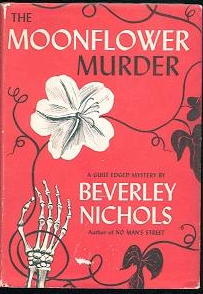 Beverley Nichols
Contrary to possible expectations, English author Beverley Nichols is not the one of the female authors in this checklist. His series character, Horatio Green, appeared in all three of the books above as well as two later ones, also from Dutton. In one novel, Green is described as “the amateur detective with a super sense of smell and a love of gardens.” One source on the Internet suggests that Nichols himself is best remembered for his books on gardening. Not being very conversant with gardening books, we are not sure. On the other hand, Horatio Green’s name does not come up often at gatherings of mystery fans. Thomas Polsky The Cudgel 1950 Polsky, who is described as having been a newspaperman in the 1930s, wrote three novels in the period 1939-1941 which featured as a series character one L. F. “Scoop” Griddle, whom one imagines was a hard-hitting, crime-solving newspaperman. The titles of these books all began with Curtains for the... and ended with either Copper or Editor or Judge. After the war, The Cudgel was a stand-alone mystery taking place in the hill country of North Carolina. Nancy Rutledge Cry Murder 1954 Nancy Rutledge, one of the small number of female authers in this list, was the author of ten works of crime fiction between 1944 and 1960 under her own name, two of them published only in England. She also had one mystery novel published as by Leigh Bryson, a Handi-Book paperback original in 1947. Cry Murder was the only one of her books which was published by Dutton. It is set in the Midwest and has a theatrical setting. All but unknown today, Rutledge was popular enough in the 1950s and 60s to have eight mystery novels serialized in The Saturday Evening Post, and one that appeared complete in one 1960 issue of Redbook. (Two of these are possibly not crime fiction, but from their titles, not all of which match up with the book versions, the other seven definitely are.) 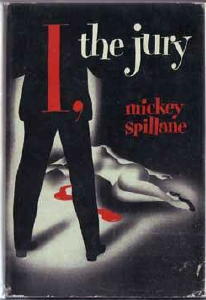 Mickey Spillane
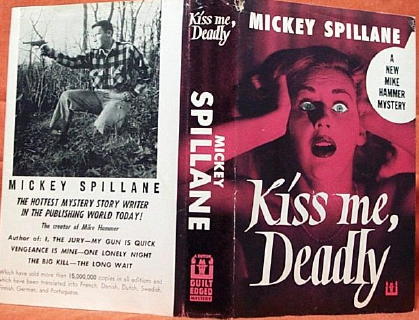 What can one say about Mickey Spillane that has not already been said? His tough and ultimately sexy private eye novels revolutionized the world of mystery and detective field like those of almost no other authors, except for giants like Poe, Doyle, Christie, Hammett, Chandler and very few others. From the back cover of Kiss Me, Deadly one can read that 15 million copies of Spillane’s books in all editions had been sold in five years, including the Signet paperbacks. Even boys in eighth grade cloakrooms read them out loud to each other, especially the good parts. I was there. I know. (This is Steve. I do not know where Victor was.) One other thing. Spillane’s most recent book, Something’s Down There, was published in December 2003, which is recent enough to consider him still active, one of perhaps only two of the Guilt Edged authors who can make that claim. (A collection of short earlier work appeared in December 2004, published by Crippen & Landru.)  Stewart Sterling
Stewart Sterling, whose real name was Prentice Winchell, was another fiction factory who appenticed in the pulp magazines, beginning with the legendary Black Mask of the 1920s. He is said to have written 400 magazine stories, 500 half-hour radio shows, plus about 30 hardcover mysteries under several names, including Spencer Dean, among others. Either as Sterling or as Dean, Winchell seemed to deliberately stay away from the standard private eye sort of detective, preferring to go with “off brand” sleuths in his stories instead. Ben Pedley was a fire marshal, for example, while Gil Vine was a hotel dick. Spencer Dean’s primary character was Don Cadee, a department store detective. Sam S. Taylor
All three of the novels above are cases solved by Los Angeles-based private eye Neal Cotten, the only mysteries written by radio scriptwriter Sam S. Taylor, who died in 1958. (*) The books are described by others as being in the hard-boiled Philip Marlowe vein, and given the Southern California locale, this is easy to believe. He was also the author of one pseudonymous paperback original, Brenda (Gold Medal, 1952) as by Lehi Zane. Perhaps of note to PI fans is one final Neal Cotten novelette, “The General Slept Here,” which appeared in the April, 1955, issue of Manhunt. (*) This statement, we have discovered later, is in error. Mr. Taylor did not die until 1994. See The Compleat Sam S. Taylor on the Mystery*File blog. 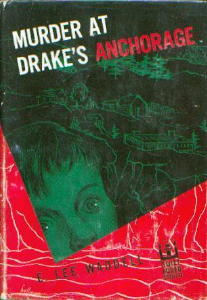 E. Lee Waddell Murder at Drake’s Anchorage 1949 Without knowing that the “E.” stands for Eleanor, you would not know that E. Lee Waddell is one of the small group of women who were published in the Guilt Edged line. This was also her only mystery, and at the present time this is all we know about her. From the front flap inside the dust jacket, it is learned that the story itself “takes place at a private school built on a desolate mountain ridge of the California sea coast.”  Lionel White
Lionel White is probably most remembered for the dozens of paperback originals he wrote for Gold Medal, Signet, Avon and others. He also wrote many hardcovers for Dutton, however, and the first four of them were part of the Guilt Edged line. His novels were invariably tough crime thrillers, often with a touch of noir. The novel Clean Break (pictured) was the basis for the movie THE KILLING (1956), directed by Stanley Kubrick and scripted in part by Jim Thompson. Also based on one of White’s crime novels was THE BIG CAPER (1957), published in paperback by Gold Medal in 1955. _____________________________________ YOUR COMMENTS ARE WELCOME. Copyright © 2006 by Steve Lewis. All rights reserved to contributors. Return to the Main Page. |